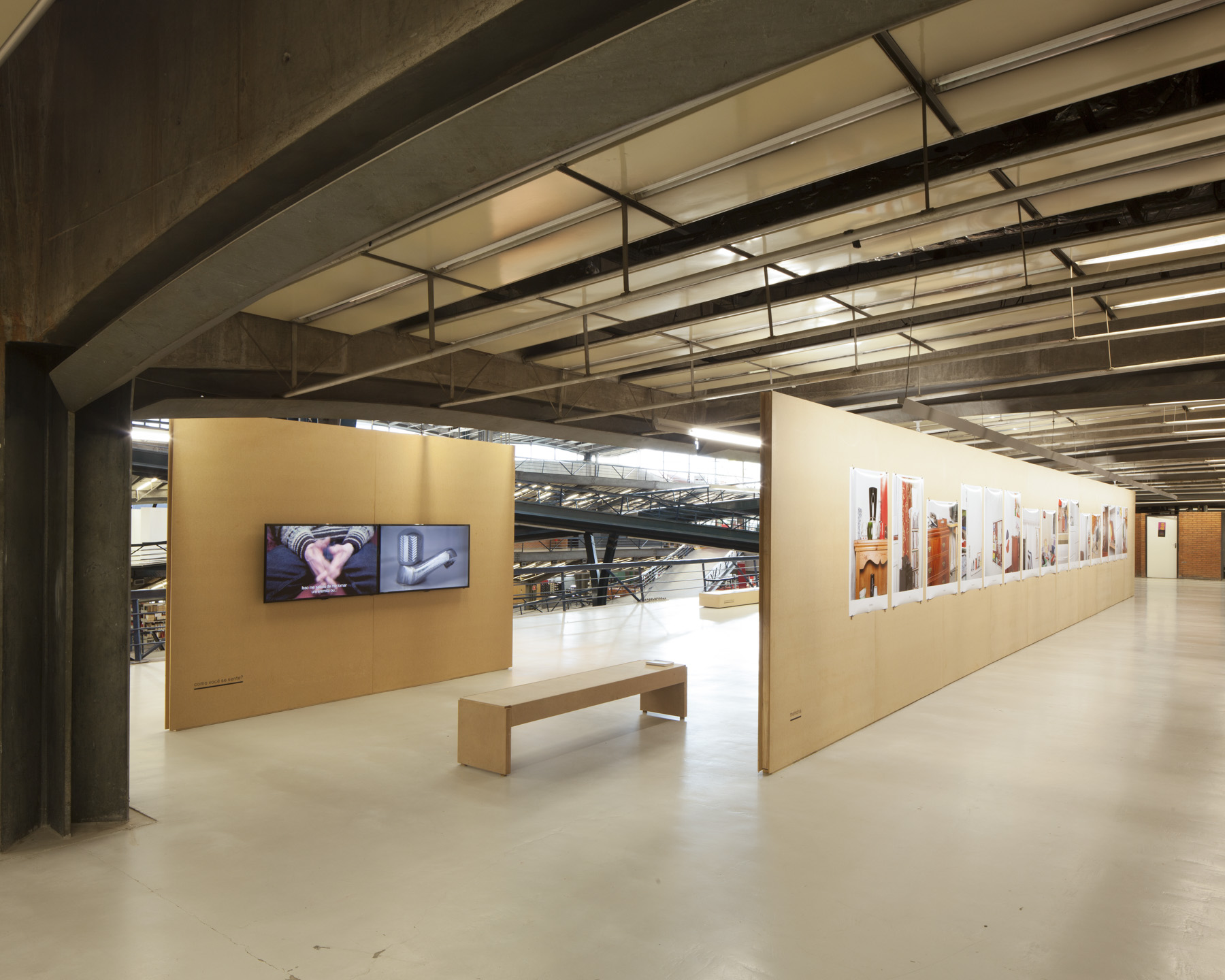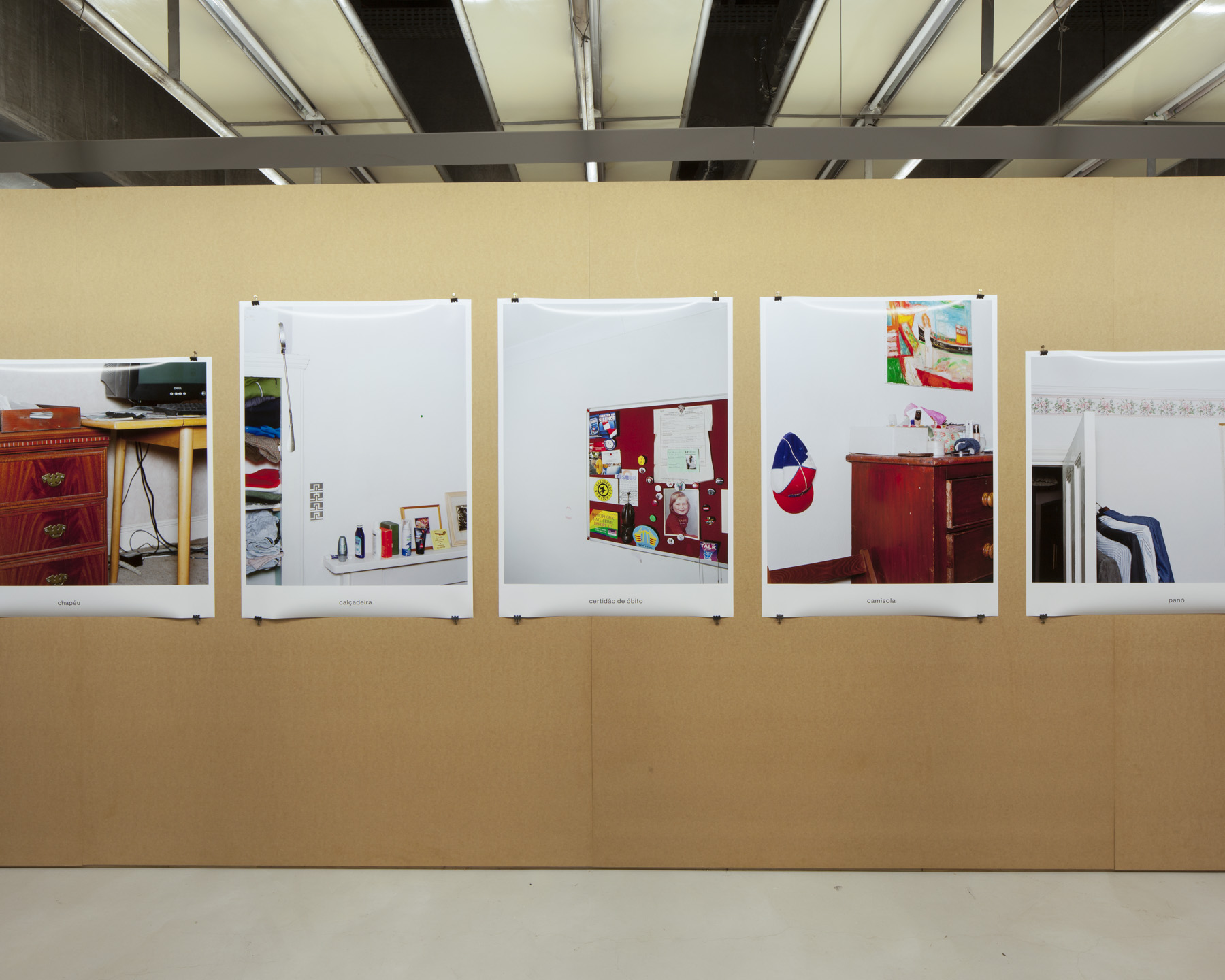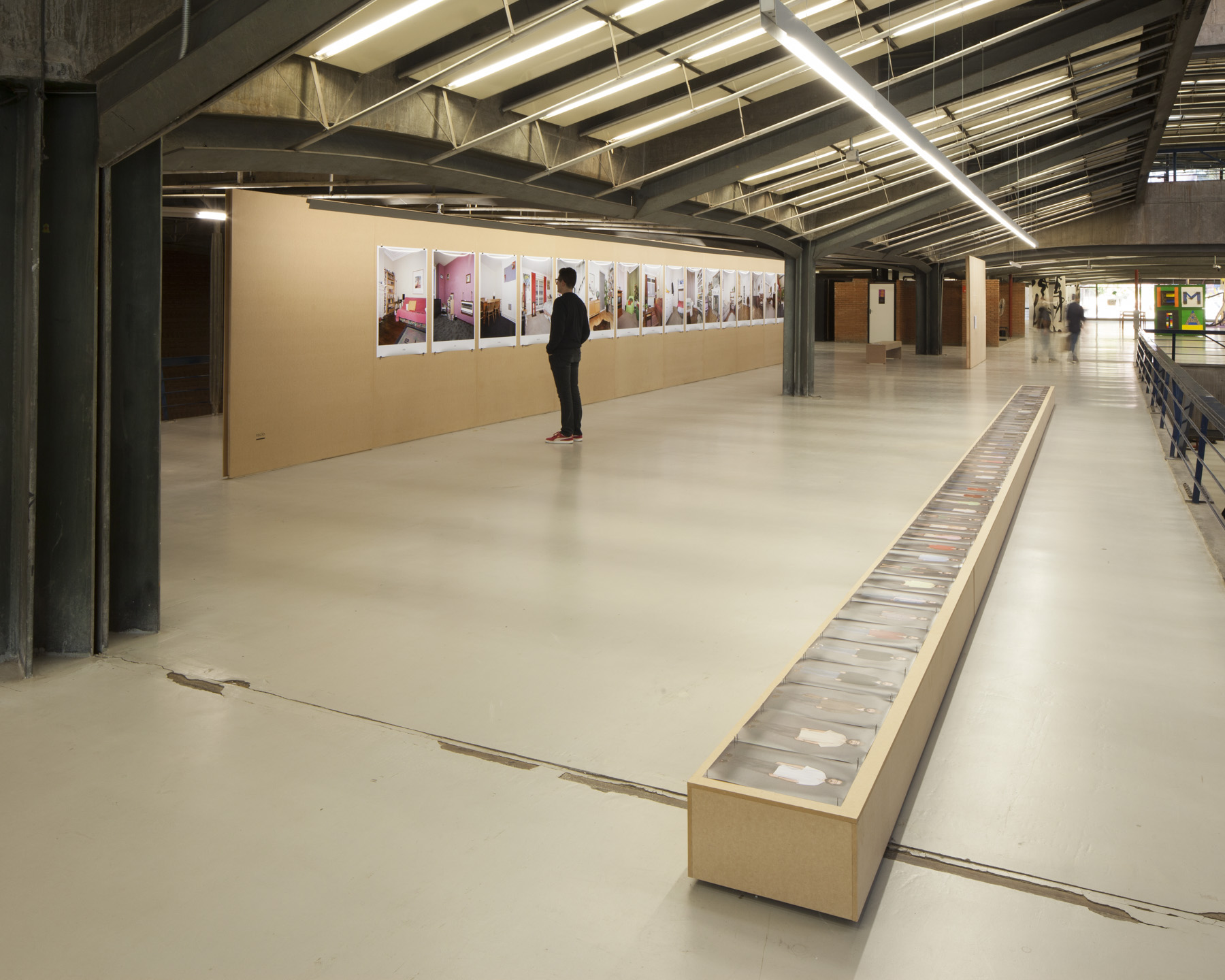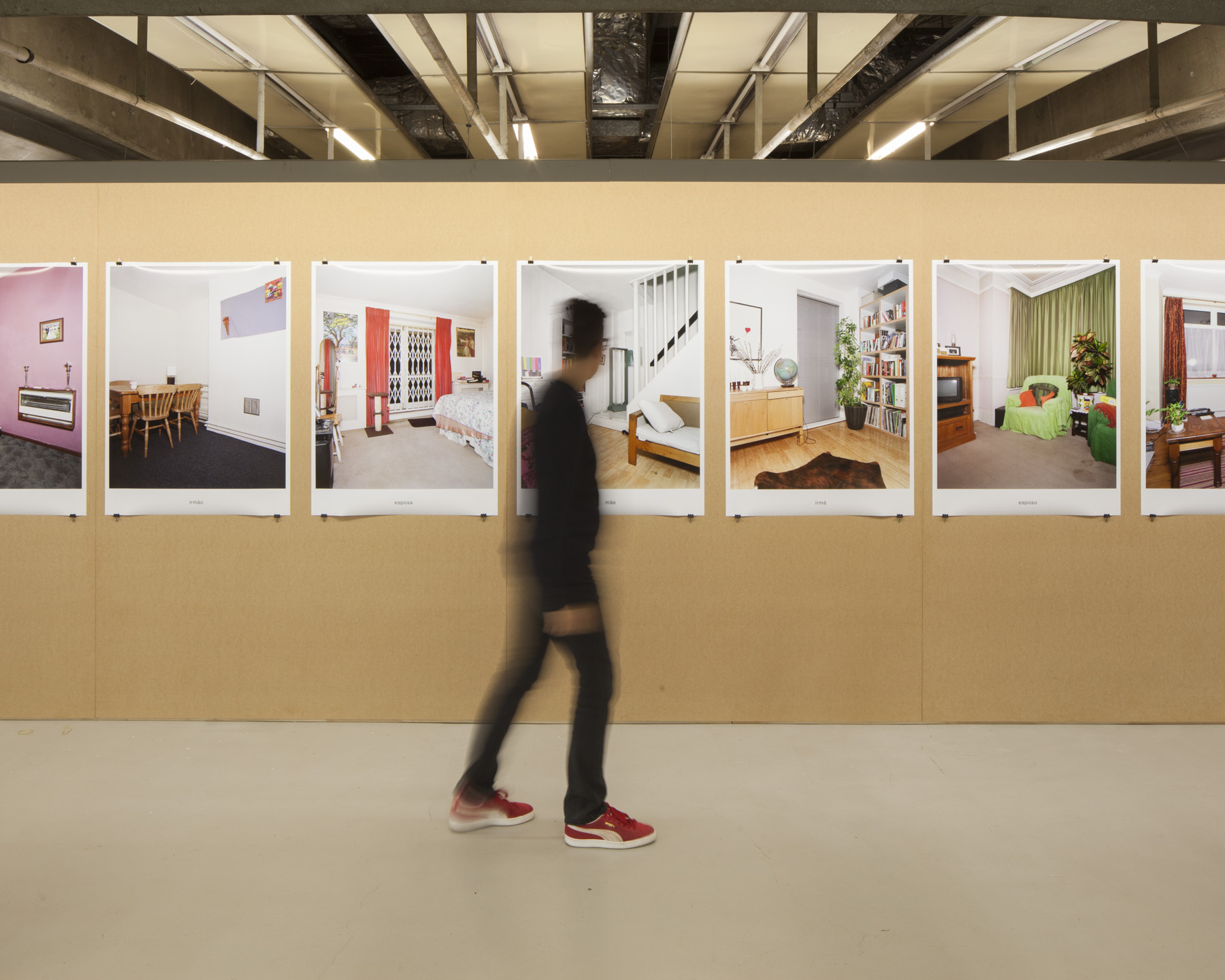Centro Cultural São Paulo – São Paulo, 2016.
Exposição contendo 32 fotografias e um vídeo do projeto Não Estou Sozinho e, também, o políptico Roupas de meu pai e o vídeo Voltando para casa.
Curadoria: Galciane Neves
Projeto expográfico: Marcus Vinicius Santos
Identidade visual: Luciana Facchini
a imagem que não seria imagem, mas o gesto diante da ausência
observação 1: Presentificar o comportamento, as atitudes, reações – ethos. É da natureza de um personagem não conseguir comunicar integralmente tudo o que quer, o que não significa que ele apelaria para um falso que ele mesmo coordena e monta para usufruto do outro. Apresenta-se travestido, aos fragmentos, como uma figura em potencial, que poderia ser extraviada ou mesmo abandonada em algum ponto da história que estava sendo registrada.
observação 2: “Como você se sente?”. Pergunta-abismo. A fala não exibe, em rigor, uma matéria verdadeira, porém a impressão, a marca, o eidos causa nos outros corpos (em quem esteve ali, ouvindo e registrando, e em quem assiste, de longe) uma ausência atravessante. As mãos se engajam na resposta. São todas elas testemunhas destes vestígios. A tela, local de acesso, e também de corte, é o espaço de articulações de uma série de discursos. Mas, mesmo parecendo apartar seus personagens de um contato cara a cara, é também o espaço de consciência desses intérpretes, quando a palavra e igualmente o silêncio são dotados de muito esforço por partilhar dor. Segue-se desse esforço uma fixação de vertigens.
observação 3: Trata-se de um habitat, indubitavelmente, um lugar comum, uma casa qualquer, um canto qualquer entre móveis e cotidiano. O registro o expõe por meio de uma descarga de fisicalidade muda. Ao visualizar essas abreviações de espaço, não nos é oferecida a possibilidade de vasculhar ou de circular. Trata-se de um visível que ilude, oprime, que faz brecar o acesso, já que invalida um pathos (será possível?). Somos evacuados dessa experiência, posto que tudo é superfície.
observação 4: Ao invés de ruptura, a topografia e o contorno de alguns elementos – objetos afetivos, rastros de quem não está mais ali. O objeto não vale por si, mas por sua combinação com o espaço, com quem ainda lembra de alguém por meio dele, com sua força de disseminar uma longínqua sensação de presença. Entre a história e a memória, os objetos ganham nomes. Saem do local de sua instauração e situam-se no interstício entre o relato (fabular) e a imaginação (percepção de quem não o vê). Nomear é o momento poético do pensamento, disse Agamben: calçadeira, camisola, panô, cd. O nome é o logos, uma possível chave para conexões lógicas de sentido de quem não acessa a coisa. Ali, repousa lembrança, um esquema compositivo para manifestar seu dono ou o seu uso antigo. Agora, cansado, empoeirado de tempo, o objeto desfalece. Não serve mais e, inútil, faz adormecer seus antecedentes.
Galciani Neves
(abril/2016)













